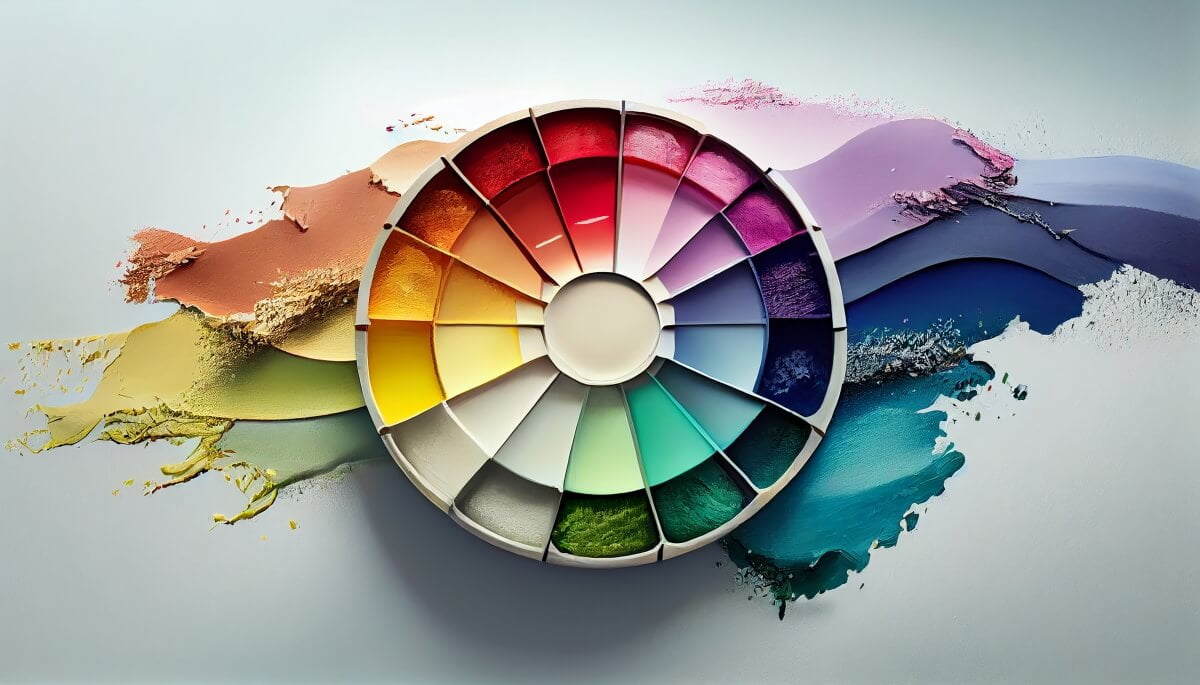
Mastering Color for Branding: An Essential Guide in Marketing Psychology
Kickstarting The Color Conversation
Introduction to Color Psychology
Embark on the science of color psychology in branding—a fascinating journey into how hues shape perceptions. Illustrated with vibrant infographics, explore the profound subconscious influence of colors on emotions. From the purity of white to the dependability of blue, branding subtly guides our perceptions, sparking emotions without conscious recognition. Mastering color intricacies enhances this impactful branding journey.
The Importance of Color in Branding
In branding, color speaks volumes. It forms an instant connection and shapes subconscious perceptions, like a silent brand audit. Colors convey your firm’s personality, from tech’s innovation to healthcare’s trust. Kumar’s study shows color influences 85% of shopper choices. Whether in a logo embodying creativity or carefully chosen examples, color is the unsung powerhouse in your branding toolkit, impacting purchasing decisions and reflecting your values.
Decoding the Color Code
Understanding The Core Colors: Red, Blue, Green, Yellow, Black and White
Meet our main actors: Red, the color of passion; Blue, the symbol of stability and trust; Green, embodying nature and growth; Yellow, radiating optimism and brightness; Black, a mark of sophistication and strength; and White, representing purity and minimalism. These colors tell your brand’s story, creating a narrative of romance, cheerfulness, and excitement.
The Emotional and Psychological Impact of Color
Colors hold a fascinating psychological power. They create an emotional symphony, influencing our moods and inspiring actions. From the urgency of red to the prosperity of green and the tranquility of blue, each hue has the innate ability to evoke reactions. Brands like Facebook and Amazon capitalize on this, using colors to stir emotions, drive behaviors, and inject cautious optimism. It’s not just about seeing red and feeling alert or green and being happy—it’s the subtle, symbolic play orchestrated by colors.
The Harmony of Hue: Brands and Color
Examples: Brands and their Signature Colors
Brand colors convey distinct messages: McDonald’s red and yellow exude fun, FedEx’s orange and purple embody speed, Hallmark’s purple signifies trust. Coca Cola’s red sparks energy, Adidas opts for black and white simplicity. IKEA’s yellow and blue captivate, Starbucks’ green symbolizes eco-responsibility. Twitter’s blue denotes tech reliability. These deliberate color choices reflect brands’ mastery of color psychology, shaping consumer connections by evoking desired emotions. From McDonald’s exuberance to FedEx’s trustworthiness, each hue is a strategic element in crafting a unique brand identity.
The Role of Color in Differentiating Brands
Color shapes brand identity, distinguishing logos like McDonald’s golden arches, Nike’s black swoosh, and Starbucks’ green mermaid for instant recognition. Brands strategically use color akin to royalty’s use of purple for wealth. Studies, like Labrecque and Milne’s, reveal industry color trends, such as credit cards relying on blue’s dependability. Fast food opts for energetic red, conveying powerful emotions. Retailers like Payless blend pink for a youthful feel, differentiating from competitors like Nickelodeon’s playful orange. This captivating dance of colors choreographs brand recognition, carving unique positions in the marketplace, akin to magenta’s mark on femininity.
Crafting Your Color Story
Choosing the Right Color for Your Brand
Choosing your brand’s color is an art, not a random pick. It mirrors your ethos, resonates with your audience, and involves fine-tuning shades. Research shows men prefer bold, women like tints, e.g., elegant purple. Harmonize with industry norms—avoid unexpected choices like pink for construction. Colors enhance credibility; Home Depot and Linkedin nail it, attracting audiences. It’s a journey for that one hue echoing your brand’s voice—choose wisely!
Creating a Color Palette for Consistency

One color isn’t enough. Even high-tech companies, like 3 in 10, use black in logos for a dynamic palette. Create a harmonious mix with primary, secondary, and accent colors for logo recognition and creativity. Tools like Coolors, rooted in the 1704 color wheel, help craft a cohesive palette. Unbox your brand colors consistently across platforms—logo, website, marketing materials. Plotting your and competitors’ logos on a color wheel adds an edge. Discover the story behind their favorite colors for your missing link in brand identity!
The Art of Implementing Color Strategy in Branding
Key Strategies for Applying Color in Branding and marketing
Color in branding demands strategic choices. Start with a brand audit to stand out, especially against healthcare competitors. Learn color psychology for creativity. Prominence and contrast are key for legible, clean content, like a clear logo. Use color emotions strategically for calls-to-action and innovation. Experiment with visual appeal using color-blocking, gradients, and monochromatic schemes. Prioritize color accessibility for clear communication to all audiences.
Cultural Contexts and Color Choices
Colors carry cultural significance, varying widely in interpretation. For example, while white represents innocence in the West, it symbolizes death in Chinese culture. Similarly, the cheerful vibe of sunshine is linked with blue, seen as feminine in China but masculine in the West. Cultural rituals and traditions shape color perceptions, influencing emotions. When choosing a color scheme, consider your target audience’s cultural background to avoid unintended meanings. The wrong color choice can be disastrous in a cultural context.
Troubleshooting Color Choices
Common Mistakes in Color Application
Color application can be tricky. Too many colors dilute brand reliability; too few lack energy. Ignoring color psychology and cultural context leads to mixed messages. Consistency matters—deviating from your brand palette on platforms like Facebook confuses your identity. Overlooking accessibility, like color blindness, limits your audience. Avoid these mistakes for a strong, credible brand that communicates the right traits.
Running Color Tests with Your Audience
Creating a compelling color story requires audience validation. While there’s no one-size-fits-all color, factors like packaging and conveyed messages matter. Nike and Adidas opt for black and white, signaling seriousness and quality. Payless uses magenta for femininity, passion, and youth. Research and anecdotes guide choices; Nickelodeon’s orange is fun, Facebook’s blue is dependable. A/B testing, like IKEA’s blue and yellow combo, measures audience response. Aligning with brand values and evoking desired reactions ensures a perfect match. Evaluate impact through surveys or analytics for consistent color success.
Frequently Asked Questions (FAQs)
What is the Role of Color Psychology in Branding?
Color psychology wields immense power in branding, silently shaping perceptions, evoking emotions, and driving actions through a sensory experience. Brands harness this influence to build a resonant personality, memorable identity, and emotional connection. This consistent communication enhances brand recognition, recall, and trust, making color psychology the unsung hero in the consumer-brand dance.
What are the Things to Consider While Choosing a Color for a Brand?
Choosing brand colors involves careful consideration of product alignment, emotional impact, and audience demographics. Yellow conveys positivity but implies caution, while blue signifies serenity and dependability. Aligning hues with brand personality and cultural contexts ensures positive perceptions. Striking a balance between standing out and adhering to industry norms creates aesthetically pleasing and spiritually symbolic colors, fostering a lasting brand impression.
How to Test if a Chosen Color Works for the Brand?
Test color effectiveness using tools like color wheels, mood boards, and A/B testing for website or packaging design. Adidas and Burberry showcase white for elegance, while purple, as seen in Yahoo and Hallmark, evokes luxury. Tailor colors, even pink, to specific demographics and ensure consistency across platforms like LinkedIn. Reassess over time for relevance and consider color emotions; red suggests power, black conveys coldness. Home Depot’s orange, conveying excitement, highlights the impact of perfecting color choices for lasting resonance.






